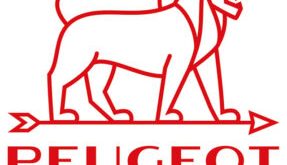 Traditional independent retailers opened more shops than they closed in 2016 in the top 500 town centres, according to data released today (Wednesday May 3).
Traditional independent retailers opened more shops than they closed in 2016 in the top 500 town centres, according to data released today (Wednesday May 3).
Statistics from LDC (Local Data Company) and bira (British Independent Retailers Association) reveal that while the national retail chains continued to see a fall in numbers in 2016, the net change in independents was +159 units (+0.15%) versus +117 (+0.11%) in 2015.This equates to a +36% increase from 2015.
The multiple retailers remained in decline with a net loss of -896 shops in 2016 across the top 500 town centres compared with -498 shops in 2015.
In 2016, a total of 29,083 independents either opened (14,621) or closed (14,462). This figure is down on 2015 when 29,936 shops opened (15,026) or closed (14,910).
The net change of comparison goods (ie non-perishable goods) shops was -2.01% in 2016 (-1.52% in 2015). This is a net decrease of -635 units, an increase on from -487 in 2015.
Leisure (restaurants, cafes, bookmakers and entertainment) growth increased by +0.34% in 2016 compared with a +0.39% increase in 2015. In 2016 there was a net increase of +116 units versus +130 units in 2015.
Convenience retail (bakers, butchers, food shops and supermarkets) saw a net increase of +91 units (+1.01%) in 2016 versus an increase of +88 units (+0.98%) in 2015.
Service retail (health & beauty, financial services, tattoo parlours and estate agents) increased by the greatest number of units at +587, up from the +385 increase in 2015 (+1.92% in 2016 versus +1.28% in 2015).
Key growth sectors are barbers, hair & beauty salons, tobacconists/e-cigarette shops, restaurants & bars, and mobile phone shops.
Sectors in decline include newsagents, women’s clothing, Indian restaurants and night clubs.
Tobacconists/e-cigarettes (+42%) and Middle Eastern restaurants (+33%) have increased the most as a percentage of their total units.
Regionally, the East Midlands showed the greatest increase of independents, while Greater London continues to see the greatest decline.
Scotland has seen a boost in the number of independents with an increase of +130 units in 2016 compared to an increase of +75 units in 2015.
But Glastonbury in Somerset has the accolade of hosting the highest percentage of independents at 85.6% (based on locations in the top 500 town centres). In contrast, Salford in Greater Manchester is the town with the lowest percentage at only 18.1%, against a GB average of 65% (again, based on locations in the top 500 town centres).
LDC director Matthew Hopkinson commented: “Independents are becoming ever more important to our High Streets. Year by year, the net gain of small businesses is accelerating, even as the net loss of chain stores increases.
“They are changing the face of our towns as well, as barbers and bars replace clothing shops and newsagents, with service and leisure gradually substituting for comparison shops.
“Not all towns, or even regions, are benefiting from that growth, though. The East, south-east and south-west of England saw a fall in the numbers of independents in 2016. None, though, saw as big a fall as Greater London, with its rising rents. That challenge is to be amplified over the next five years by rising rates bills as well.”
He added: “The high levels of openings and closures among independents must be seen as a sign of continued buoyancy in our towns. But there is no room for complacency. With a gain on balance of just 159 shops on the back of more than 29,000 openings in 2016, it would take very little for net gains to become net losses.”
Bira ceo Alan Hawkins said: “It’s good to have some positive news at last, especially in Scotland. It’s clear that the real winners are those areas where the customer has to be present such as hair and beauty.
“Service, leisure and convenience stores all showed good positive net openings, with only comparison shops doing worse. The fact that most bira members are in this category is an issue that we, and our members, are working hard to redress.”
But, he noted, the news there are over 100,000 independents in the top 500 towns – and that 65% of all retail and leisure outlets are independents – was cause for celebration.
Alan concluded: “The fact that net growth is still in the low hundreds means no let-up in our effort to convince government that support is needed. Without them, it would be a much emptier exchequer. The next few LDC surveys will make interesting reading, as the government has failed to deliver the fundamental rates reform we were looking for, and we expect some economic realities to hit home.”
*The total number of independent businesses covered in this research across the top 500 town centres in Great Britain was 104,963 (+0.09% increase from 2015)
 Housewares Business-to-business magazine for housewares retailers and their suppliers
Housewares Business-to-business magazine for housewares retailers and their suppliers



